HF Antenna Cookbook
Technical Application Report
11-08-26-001 Jan 2004
Radio Frequency Identification Systems
�
�
Lit. Number 11-08-26-001
Contents
Edition Two – Jan 2004 ........................................................................................................ i
About this Manual................................................................................................................ ii
Conventions......................................................................................................................... ii
If You Need Assistance .......................................................................................................ii
Abstract ................................................................................................................................ 1
1 Construction Details ..................................................................................................... 2
1.1 Copper Tape............................................................................................................. 2
1.2 Copper Tube............................................................................................................. 3
1.2.1 Mounting tuning components..............................................................................................3
2 Copper Tube Antenna (500mm x 500mm).................................................................... 4
2.1 Matching Components .............................................................................................. 5
2.1.1 Gamma matching the Antenna ...........................................................................................5
3 Tape Antenna (1000 mm x 600 mm) ............................................................................. 7
3.1 Tuning to Resonance ................................................................................................ 8
3.2 Damping the Q.......................................................................................................... 8
3.3 Matching the Loop to 50 Ohms ............................................................................... 10
3.4 Tuning..................................................................................................................... 11
3.5 Adding a Common Mode Choke ............................................................................. 12
4 Copper Tube Antenna (1 m x 1 m) .............................................................................. 13
4.1 Matching Circuit Layout........................................................................................... 13
4.2 Matching Components ............................................................................................ 14
5 Double Loop Antenna ................................................................................................. 15
5.1 The Matching Board................................................................................................ 16
5.2 Matching Components ............................................................................................ 16
5.3 Winding the BALUN ................................................................................................ 17
6 Small Antenna 1 (40 mm × 30 mm)............................................................................. 18
6.1 Circuit Layout.......................................................................................................... 18
6.2 The Matching Components ..................................................................................... 18
7 Small Antenna 2 (50 mm × 30 mm)............................................................................. 19
7.1 Circuit Layout.......................................................................................................... 19
7.2 The Matching Components ..................................................................................... 19
8 Small Antenna 3 (60 mm × 30 mm)............................................................................. 20
8.1 Circuit Layout.......................................................................................................... 20
8.2 Matching Components ............................................................................................ 20
9 Small Antenna 4 (150 mm × 100 mm)......................................................................... 21
9.1 Circuit Layout.......................................................................................................... 21
9.2 Matching Components ............................................................................................ 22
10 Conclusion ............................................................................................................... 23
Figures
Figure 1. Soldered Antenna Corners ................................................................................ 2
Figure 2. Picture showing copper tube and the joining material .................................... 3
Figure 3. Assembled Tube with Damping Resistor.......................................................... 3
Figure 4. Copper Tube Antenna 500mm x 500mm ........................................................... 4
Figure 5. Resonance Tuning Components....................................................................... 4
�
Lit. Number 11-08-26-001
Figure 6. Thick Film Damping Resistor ............................................................................ 5
Figure 7. Gamma Matching Arm........................................................................................ 5
Figure 8. Soldered Copper Tape Main Loop..................................................................... 7
Figure 9. Variable Mica Capacitor ..................................................................................... 8
Figure 10. Air Gap Variable Capacitor ............................................................................. 8
Figure 11.
10K Thick Film Resistor.................................................................................. 9
Figure 12. Resonant Capacitors and Damping Resistor ................................................ 9
Figure 13. Dimensions of Matching arms........................................................................ 10
Figure 14. Completed Antenna......................................................................................... 11
Figure 15.
VSWR Meter..................................................................................................... 12
Figure 16. Common Mode Choke..................................................................................... 12
Figure 17.
The 1 m Loop with Spacer ............................................................................. 13
Figure 18. Artwork for Matching Board ........................................................................... 14
Figure 19.
1 m × 1 m Antenna Matching Circuit .............................................................. 14
Figure 20. Double Loop Antenna ..................................................................................... 15
Figure 21. Clinch Nuts ...................................................................................................... 15
Figure 22. Artwork and Completed Board....................................................................... 16
Figure 23. How to Wind The BALUN ................................................................................ 17
Figure 24. Matching Board Connected ............................................................................ 17
Figure 25.
40 mm × 30 mm Antenna Artwork .................................................................. 18
Figure 26. Completed Antenna......................................................................................... 18
Figure 27.
50 mm × 30 mm Antenna Artwork .................................................................. 19
Figure 28. Completed Antenna......................................................................................... 19
Figure 29.
60 mm × 30 mm Antenna Artwork .................................................................. 20
Figure 30. Completed Antenna......................................................................................... 20
Figure 31.
150 mm × 100 mm Antenna Artwork .............................................................. 21
Figure 32. Completed Antenna......................................................................................... 22
Figure 33. Roller Conveyor Read Gate ............................................................................ 23
�
Lit. Number 11-08-26-001
Edition Two – Jan 2004
This is the second edition of this Technical Application Report called HF Antenna Cookbook.
It contains descriptions of how to build and tune antennas for use at 13.56MHz which can be
used in conjunction with:
S4100, S6350, S6400, and S6500 Series Readers
This document has been created to help support Texas Instruments’
Customers in designing in and /or using TI*RFID products for their chosen
application. Texas Instruments does not warrant that its products will be
suitable for the application and it is the responsibility of the Customer to
ensure that these products meet their needs, including conformance to
any relevant regulatory requirements.
Texas Instruments (TI) reserves the right to make changes to its products
or services or to discontinue any product or service at any time without
notice. TI provides customer assistance in various technical areas, but
does not have full access to data concerning the use and applications of
customers’ products.
Therefore, TI assumes no liability and is not responsible for Customer
applications or product or software design or performance relating to
systems or applications incorporating TI products. In addition, TI assumes
no liability and is not responsible for infringement of patents and / or any
other intellectual or industrial property rights of third parties, which may
result from assistance provided by TI.
TI products are not designed, intended, authorized or warranted to be
suitable for life support applications or any other life critical applications
which could involve potential risk of death, personal injury or severe
property or environmental damage.
TIRIS and TI*RFID logos, the words TI*RFID™ and Tag-it™ are trademarks or registered
trademarks of Texas Instruments Incorporated (TI).
Copyright (C) 2001 Texas Instruments Incorporated (TI)
This document may be downloaded onto a computer, stored and duplicated as necessary to
support the use of the related TI products. Any other type of duplication, circulation or storage on
data carriers in any manner not authorized by TI represents a violation of the applicable copyright
laws and shall be prosecuted.
Page (i)
�
About this Manual
Lit. Number 11-08-26-001
PREFACE
Read This First
This Technical Application Report 11-08-26-001 is designed for use by TI-RFID partners
who are engineers experienced with TI-RFID and Radio Frequency Identification Devices
(RFID).
Conventions
Certain conventions are used in order to display important information in this manual,
these conventions are:
WARNING:
A warning is used where care must be taken or a certain
procedure must be followed, in order to prevent injury or
harm to your health.
CAUTION:
This indicates information on conditions, which must be met,
or a procedure, which must be followed, which if not heeded
could cause permanent damage to the system.
Note:
Indicates conditions, which must be met, or procedures, which
must be followed, to ensure proper functioning of any hardware or
software.
Information:
Information which makes setting up, or procedures, that makes the
use of the equipment or software easier, but is not detremental to
its operation.
If You Need Assistance
For more information, please contact the sales office or distributor nearest you. This
contact information can be found on our web site at: http://www.ti-rfid.com.
Page (ii)
�
Lit. Number 11-08-26-001
J A Goulbourne
RFID Systems, Northampton
HF Antenna Cook Book
Abstract
During the past years it has become clear that with each application of smart labels
then a new antenna system has to be designed. A few off the shelf HF Antennae
are available but many antennae have to be designed from scratch, in order to
meet the system requirements.
The ‘HF Antenna Cook Book’ is the result of this need to build different antenna
systems and has been written to show the RFID Engineer how to design various
HF antennas for use with Texas Instruments Tag-it™ and ISO 15693 transponder
inlays. The descriptions within this document are based on actual designs which
have been completed at Texas Instruments RFID laboratories and used to
demonstrate antenna configurations during various trials that have subsequently
taken place.
The document is full of pictures and constructional details for a variety of antennae
operating at 13.56MHz and which are primarily matched to the characteristics of
Texas Instruments’ RFID readers. This is not an exhaustive list of antenna types
that could be used, but it does offer the RF antenna design engineer an insight into
some of them that have been used.
Note:
Because antenna loops may be slightly different in size to those
shown in this document, and because of component tolerances,
the RF Engineer may have to fine-tune individual antenna designs
to achieve the correct matching.
Page (1)
�
Lit. Number 11-08-26-001
1 Construction Details
An antenna loop can be constructed from any conductive material but in this note, three
common methods involve using either copper PCB tracks, copper tape or copper tube.
1.1 Copper Tape
Adhesive copper tape is available in a number of widths and with conductive and non-
conductive adhesive. It is recommended to use the non-conductive type because it is
much less expensive. As a general rule, as the size of the antenna increases, the width
of the tape should increase to keep the antennae inductance to a minimum.
For example to build a 150mm x 150mm (6" x 6") antenna - 10mm wide tape would be
satisfactory but for a 1m x 1m (40" x 40") antenna 50mm (2") tape is required. The
backing board must also be stiff enough, for the size of antenna, to prevent the tape
rippling or stretching when applied.
All the joints should be soldered as shown in Figure 1 with minimum overlap, to avoid
adding parasitic capacitance. For the best results, the corners of rectangular antennas
should be at 45º
Figure 1. Soldered Antenna Corners
Page (2)
�
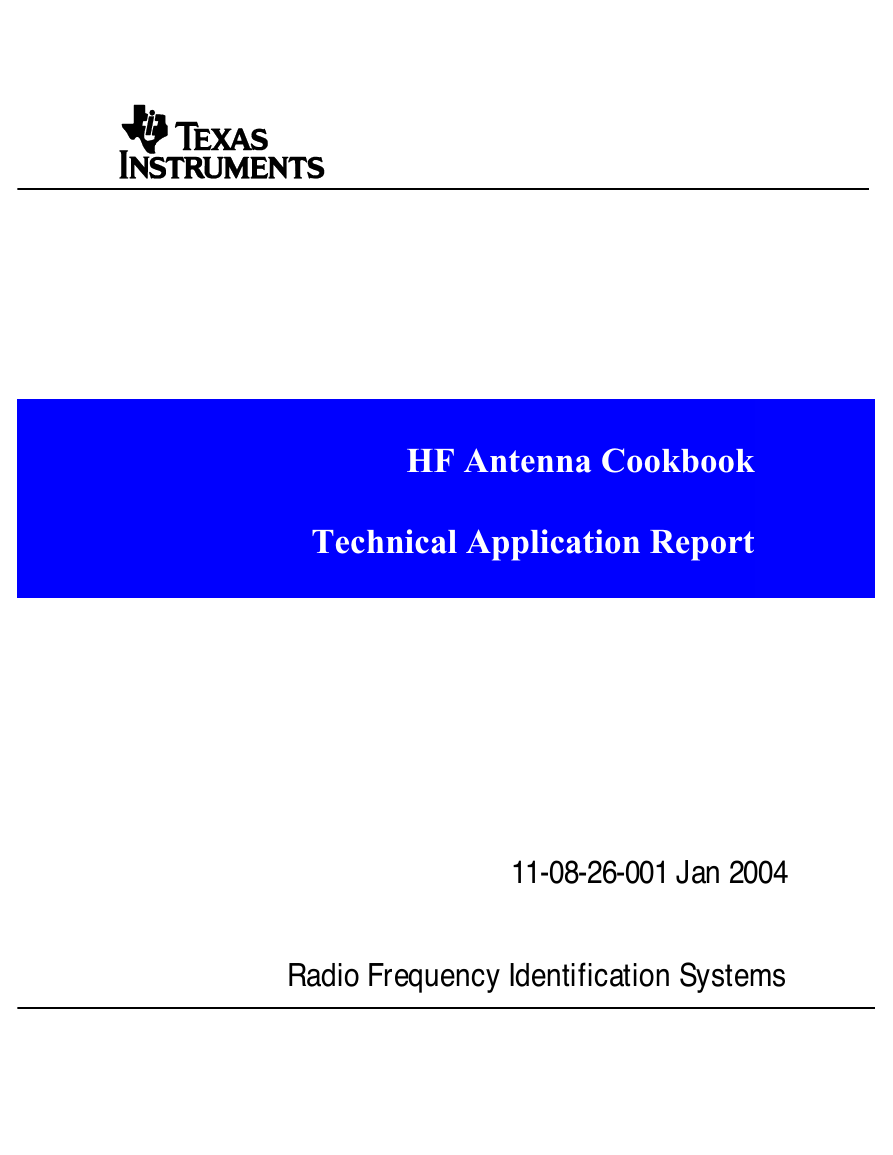

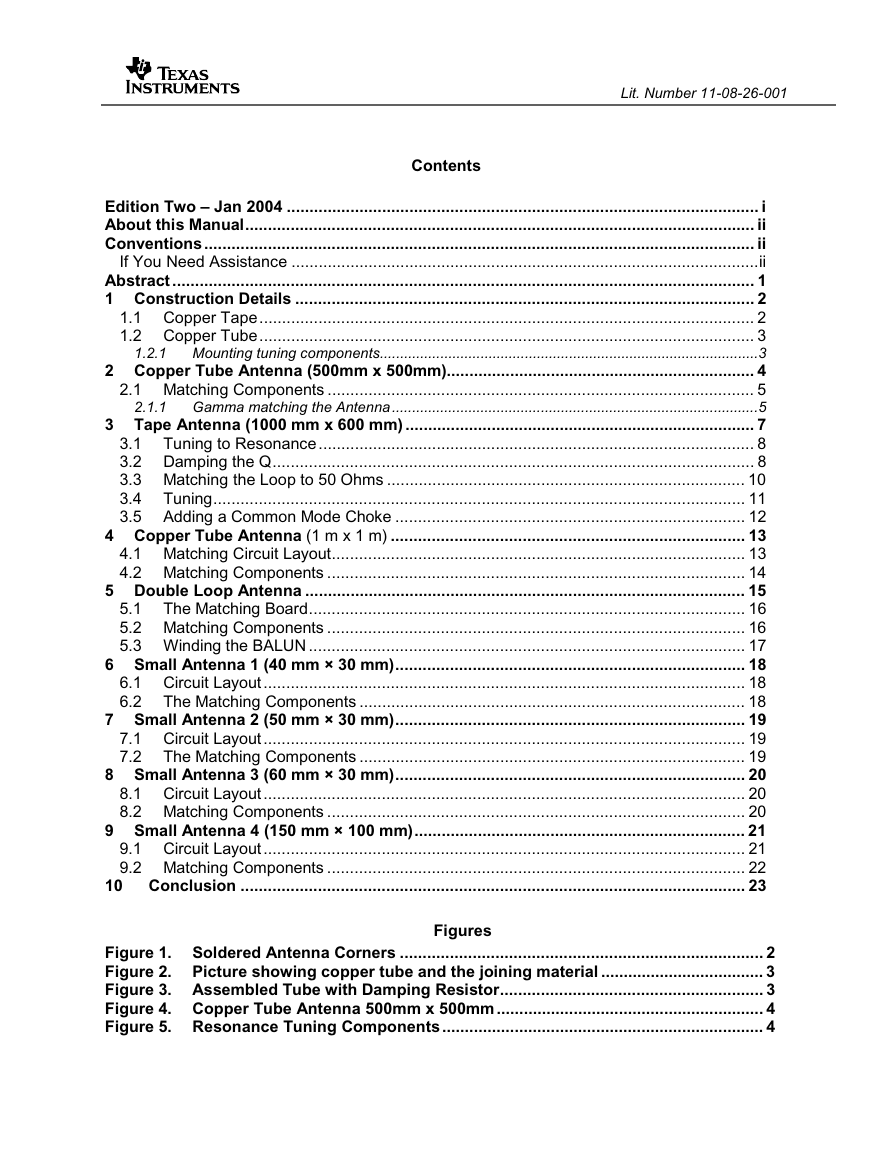
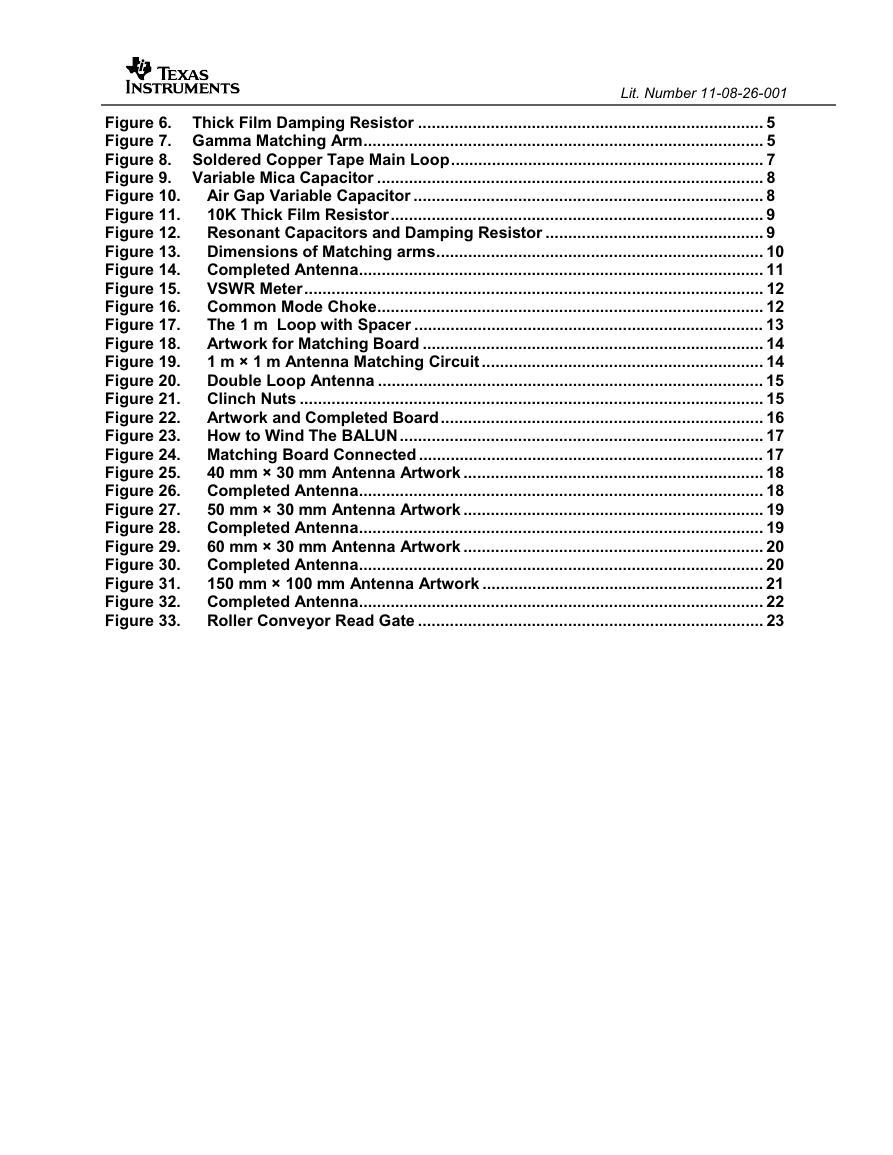

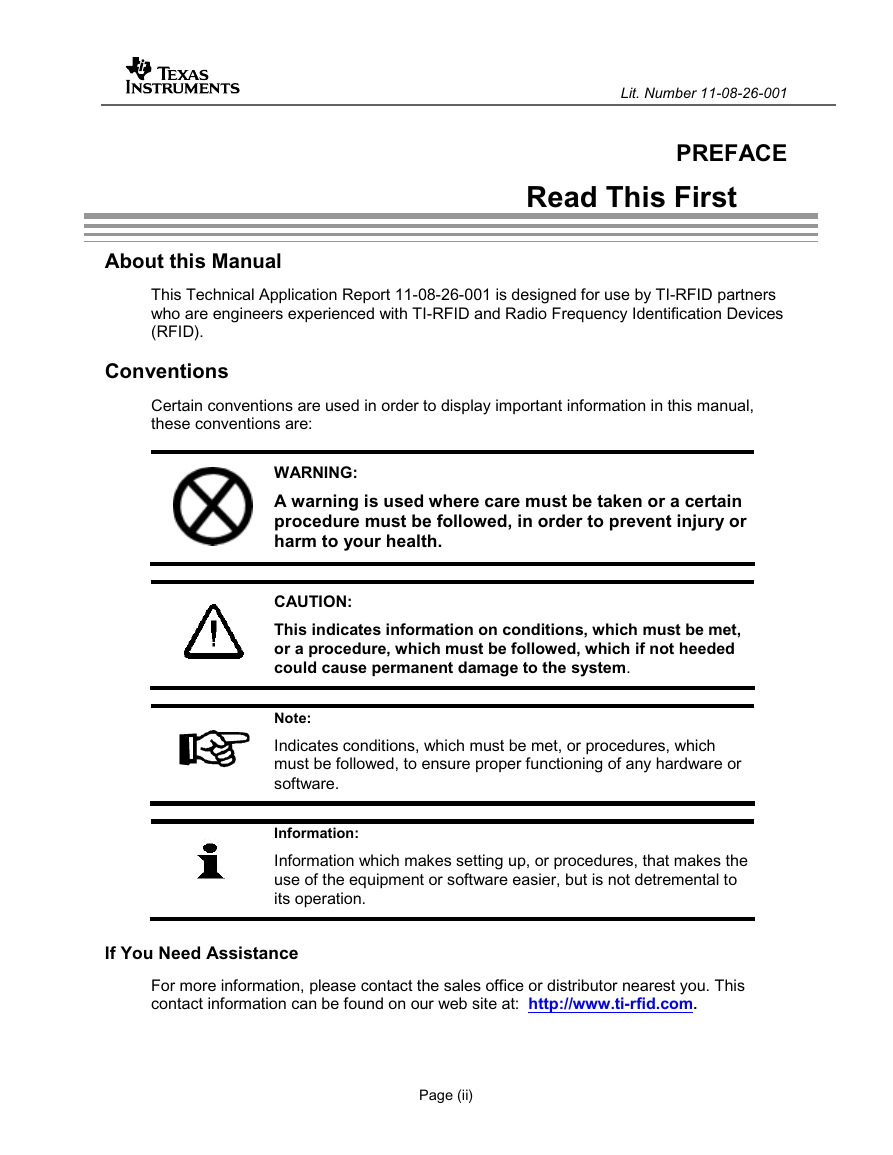

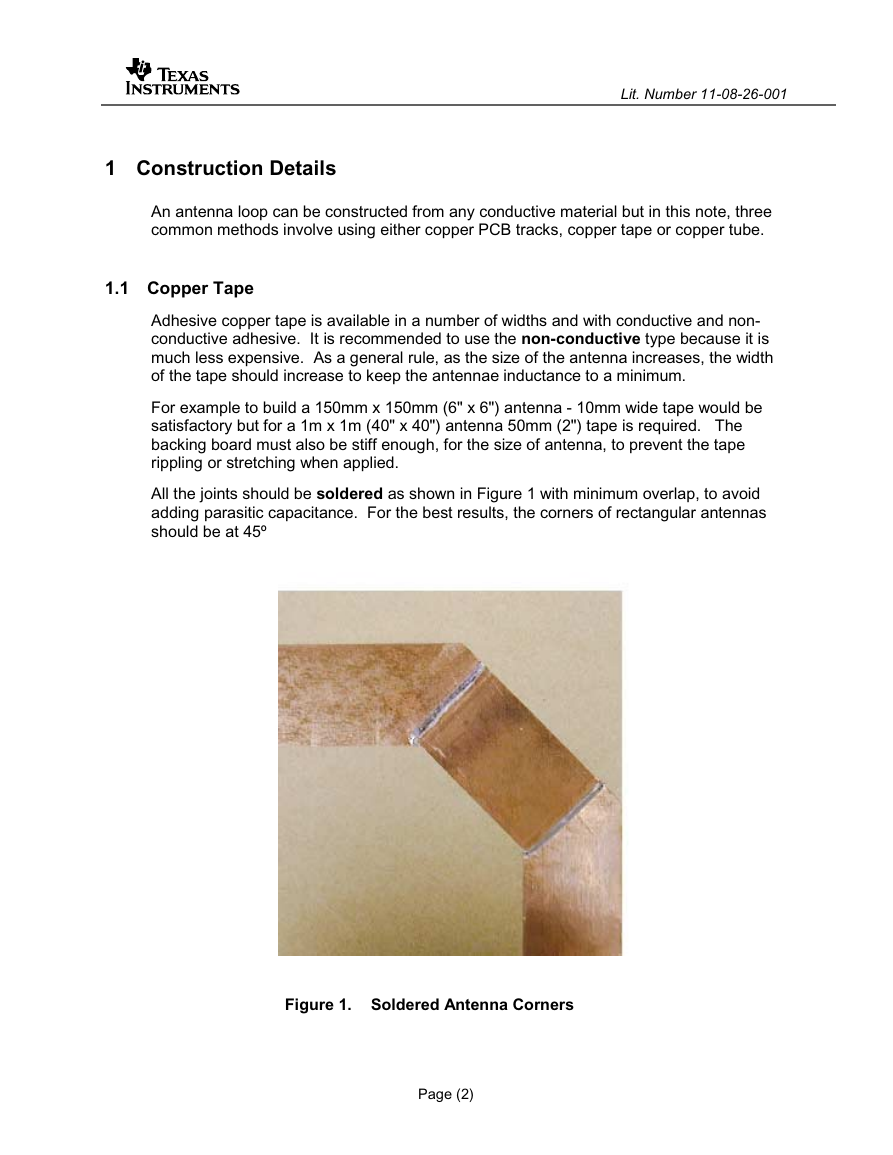








 2023年江西萍乡中考道德与法治真题及答案.doc
2023年江西萍乡中考道德与法治真题及答案.doc 2012年重庆南川中考生物真题及答案.doc
2012年重庆南川中考生物真题及答案.doc 2013年江西师范大学地理学综合及文艺理论基础考研真题.doc
2013年江西师范大学地理学综合及文艺理论基础考研真题.doc 2020年四川甘孜小升初语文真题及答案I卷.doc
2020年四川甘孜小升初语文真题及答案I卷.doc 2020年注册岩土工程师专业基础考试真题及答案.doc
2020年注册岩土工程师专业基础考试真题及答案.doc 2023-2024学年福建省厦门市九年级上学期数学月考试题及答案.doc
2023-2024学年福建省厦门市九年级上学期数学月考试题及答案.doc 2021-2022学年辽宁省沈阳市大东区九年级上学期语文期末试题及答案.doc
2021-2022学年辽宁省沈阳市大东区九年级上学期语文期末试题及答案.doc 2022-2023学年北京东城区初三第一学期物理期末试卷及答案.doc
2022-2023学年北京东城区初三第一学期物理期末试卷及答案.doc 2018上半年江西教师资格初中地理学科知识与教学能力真题及答案.doc
2018上半年江西教师资格初中地理学科知识与教学能力真题及答案.doc 2012年河北国家公务员申论考试真题及答案-省级.doc
2012年河北国家公务员申论考试真题及答案-省级.doc 2020-2021学年江苏省扬州市江都区邵樊片九年级上学期数学第一次质量检测试题及答案.doc
2020-2021学年江苏省扬州市江都区邵樊片九年级上学期数学第一次质量检测试题及答案.doc 2022下半年黑龙江教师资格证中学综合素质真题及答案.doc
2022下半年黑龙江教师资格证中学综合素质真题及答案.doc